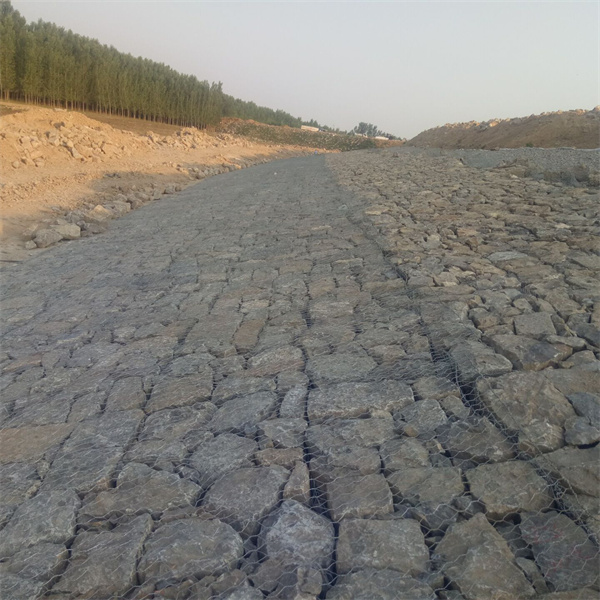Okt . 12, 2024 22:54 Back to list
Choosing the Right Stones for Your Gabion Cages Project
The Essential Role of Rocks in Gabion Cages
Gabion cages are a cornerstone of modern engineering and landscaping, valued for their versatility, durability, and environmental benefits. At the heart of these structures are rocks, which serve not just as a filler, but as essential components that enhance the functionality and aesthetics of gabion cages. In this article, we will explore the different types of rocks commonly used in gabion cages, their advantages, and considerations when selecting the right material for various applications.
What are Gabion Cages?
Gabion cages are wire mesh containers filled with rocks, stones, or other materials used primarily in civil engineering and landscape architecture. Initially developed for erosion control, these structures have evolved into retaining walls, decorative elements, and even foundations, offering a blend of functionality and natural beauty.
Types of Rocks Used in Gabion Cages
There are several types of rocks commonly utilized in gabion cages, categorized based on their size, texture, and material properties. The most popular options include
1. Granite Renowned for its strength and durability, granite is often favored for its resistance to weathering and erosion. Its aggregate form provides excellent drainage properties, allowing water to pass through while maintaining structural integrity.
2. Limestone This sedimentary rock is widely used due to its availability and cost-effectiveness. Limestone offers a rough texture, promoting interlocking between stones that enhances stability, making it a prime candidate for erosion control.
3. River Rock Sourced from riverbeds, these smooth, rounded stones are aesthetically pleasing and vary in size. River rocks are often used in decorative applications, adding natural beauty to landscapes while still providing effective structural support.
4. Basalt This volcanic rock is appreciated for its hardness and density. Basalt's dark color lends a modern look to gabion projects, and its resistance to chemical reactions makes it ideal for various environmental conditions.
5. Recycled Materials In recent years, the use of recycled concrete and other materials has gained popularity, offering an eco-friendly alternative. These materials can often be more cost-effective while still providing satisfactory performance.
Advantages of Using Rocks in Gabion Cages
The use of rocks in gabion cages confers a number of advantages
rocks for gabion cages

- Structural Integrity Rocks provide the necessary mass and stability, ensuring that the gabion cages can withstand environmental forces such as water flow and soil movement.
- Drainage The spaces between rocks allow for excellent drainage, reducing the risk of water accumulation and subsequent destabilization of the structure
.- Aesthetic Appeal With a myriad of colors, shapes, and sizes, rocks can enhance the visual appeal of gabion structures, making them an attractive option for landscaping and architectural designs.
- Eco-Friendly Gabion cages use natural materials and can promote local biodiversity by providing habitats for plants and animals.
- Cost-effectiveness Rocks, especially when sourced locally, can be a cost-effective solution compared to heavy masonry or concrete alternatives.
Considerations in Rock Selection
When selecting rocks for gabion cages, several factors should be considered
- Size and Shape The size of the rocks should be appropriate for the mesh openings of the gabion cages to ensure stability.
- Durability Opt for rocks that can withstand environmental stresses, including freeze-thaw cycles and chemical exposure, to maximize the lifespan of the gabion.
- Local Availability Sourcing materials locally not only reduces transportation costs but also minimizes environmental impact.
- Aesthetic Compatibility The choice of rocks should align with the overall design goals, complementing the surrounding landscape or structure.
Conclusion
Rocks play a vital role in the construction and functionality of gabion cages. Their strength, durability, and visual appeal make them an invaluable resource in both engineering applications and landscape design. As the demand for sustainable and environmentally-friendly construction practices continues to rise, the use of rocks in gabion structures will undoubtedly remain a popular and effective choice. Whether for erosion control, decorative purposes, or structural needs, the right selection of rocks can lead to successful and lasting gabion projects.
-
Visualizing Gabion 3D Integration in Urban Landscapes with Rendering
NewsJul.23,2025
-
The Design and Sustainability of Gabion Wire Mesh Panels
NewsJul.23,2025
-
The Acoustic Performance of Gabion Sound Barriers in Urban Environments
NewsJul.23,2025
-
Mastering the Installation of Galvanized Gabion Structures
NewsJul.23,2025
-
Gabion Boxes: Pioneering Sustainable Infrastructure Across the Globe
NewsJul.23,2025
-
Custom PVC Coated Gabion Boxes for Aesthetic Excellence
NewsJul.23,2025
-
Installation Tips for Gabion Wire Baskets in Erosion Control Projects
NewsJul.21,2025






